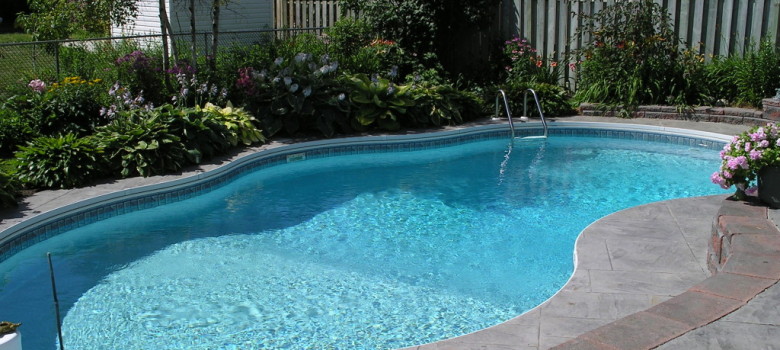
Swimming pools are no doubt a luxury item for the few in the country that can afford them. This is not only due to the cost of installing one, but perhaps just as importantly the cost of running one throughout the year. Heating the volume of water contained within a swimming pool can come at great cost. This often limits their usage to just a couple of months during the summer.
This doesn’t have to be the case though, as renewable technologies and energy efficient heating methods dramatically reduce the running costs. This allows the swimming pools to be used for a longer duration throughout the year, at a reduced price and also makes them a more attractive product.
In this blog, we look at the common misconceptions of heating patterns, the efficiency and cost of oil and gas for swimming pool heating as well as new technologies, which provide much better alternatives.
Heating patterns
The first thing to say is that most outdoor pools will definitely not be heated in the winter, while indoor pools may be heated all year around.
The thing to bear in mind is that the difference between temperature of the water and the external ambient temperature determines exactly how much energy is required to heat the pool.
For an outdoor pool, in the winter when the outside temperature is lower, the pool will lose heat more quickly. Conversely in the summer, where the water temperature and the outside temperature are relatively well matched, less heating will be required.

For an indoor pool it is slightly different, since the heating requirement depends on the actual usage of the pool itself. For example if you were to only use the pool during the weekend, then there is no point in keeping the heating on throughout the week. The amount of energy required for water heating and the heat loss of the pool are directly correlated.
As a result you may want to ensure that the inefficient gas and oil boilers only start heating on Friday night and switch off on the Sunday to keep heating costs down. Even if you are heating all week, it is really important to use a swimming pool cover to help keep that heat in and reduce the amount of heating required.
If you have a renewable heating systems for the swimming pool, such as Solar Thermal, then it becomes much more feasible to maintain the swimming pool’s temperature at around 28 degrees.
Solar thermal for your swimming pool
Solar thermal, or solar hot water, is an entirely free source of hot water using the sun’s rays. With no operating costs, easy installation and high durability, solar thermal provides excellent water heating. However, there are drawbacks as it only heats when the sun is shining and on cloudy days the temperature of the water may not be hot enough to use them as the sole heating source.
This means that, although they are the ideal solution for swimming pool heating in warmer areas, they should only really be used as additional heating in less sunny environments. You should not be dissuaded from them however, as they are still a great cost saving technology, but just one that may not be able to run independently of other heat sources.
Heat pumps for swimming pools
The most efficient way to heat your swimming pool is through a heat pump. The technology is much like an air conditioner, but in reverse. The heat pump requires electricity in order to achieve the required temperature, however they are able to exchange 1 unit of electricity to 5 units of heat due to their high efficiency. Whereas heat pumps for domestic hot water require the temperature to reach around 50 degrees, swimming pool heat pumps do not require the temperature to reach anything more than 30. This explains how they are able to achieve the 500% efficiency compared to perhaps only 300% for domestic heat pumps and highlights how much this technology could save when compared to gas and oil counterparts.
The heat pump can be used as a standalone heating system for the pool, however savings will be increased even further when the heat pump is use in conjunction with solar thermal technology. A swimming pool heat pump is also significantly less expensive than a household pump and will pay back very quickly if you are off gas grid. Whilst it probably isn’t worth switching to a heat pump from a gas boiler, if you are installing from new it is a very attractive option.
Can you get the RHI for a swimming pool heat pump?
For a heat pump that is solely for the purpose of heating a swimming pool, the renewable heat incentive is not available. However, when a heat pump that is currently supplying domestic hot water is used to also heat the swimming pool, the pump IS eligible for the RHI. Of course, you will not get any additional money due to the heat demands of the swimming pool.
What are the numbers?
Taking a 15 x 30ft pool that takes 74.4 kw per day to heat (10048 kw per season of 135 days).
- Gas £600 to heat per season
- Oil £900 to heat per season
- Electric heater £2500 to heat per season
- Heat Pump £500 to heat per season
Solar thermal savings obviously depend on how much sun it receives, but expect to see around 60% of the heating carried out for free by the solar thermal. Based on an install cost of £4,000 for a 15x30ft pool, you could see returns in under 10 years if you are currently relying on oil (or just a few years for electricity) to heat the pool.
So bear in mind renewables if you are looking to heat a swimming pool. There are some fantastic options out there that will save you money.
Think we missed something? Do you have a different opinion?
Comment below to get your voice heard…











A swimming pool in one’s back garden or cellar might be a “luxury item” but public swimming pools are being closed at a rate of knots in this country, precisely because they cost so much to heat.
Solar thermal has one of the lowest embodied energy of almost any energy technology and is almost perfectly suited to swimming pools.
Why not target public pools?
I completelly agree Solar thermal is perfectly matched to use in swimming pools. However you need a very large area and a well set-up system. most pool owners are not impressed with the numbers and I hardly ever get asked to install a system.
We completely agree with you!
A heat exchanger powered by the main gas fired boiler provides heating for our 24ftx12ft 4600 gallon inground outdoor pool which is fitted with a bubble solar cover.
Can you please advise whether Is it better to keep the pool temperature ticking over a little higher at say 20-22c rather than the average ambient temperature of 16 -17c and then upping temperature to 28c when good weather is forecasted for swimming ?
If you don’t use the pool consistantly it is best to switch the heating off during periods of no use and switch on before you plan to use it.
for a home indoor pool with use 365 days a year what would the best renewable solution be. Is biomass in the equation or a mix of technologies?
Above I read that a 15 x 30ft pool that takes 74.4 kw per day to heat
There are reports that in Exmouth a 25metre pool is heated by ‘a data centre’. How many kw per day is required?